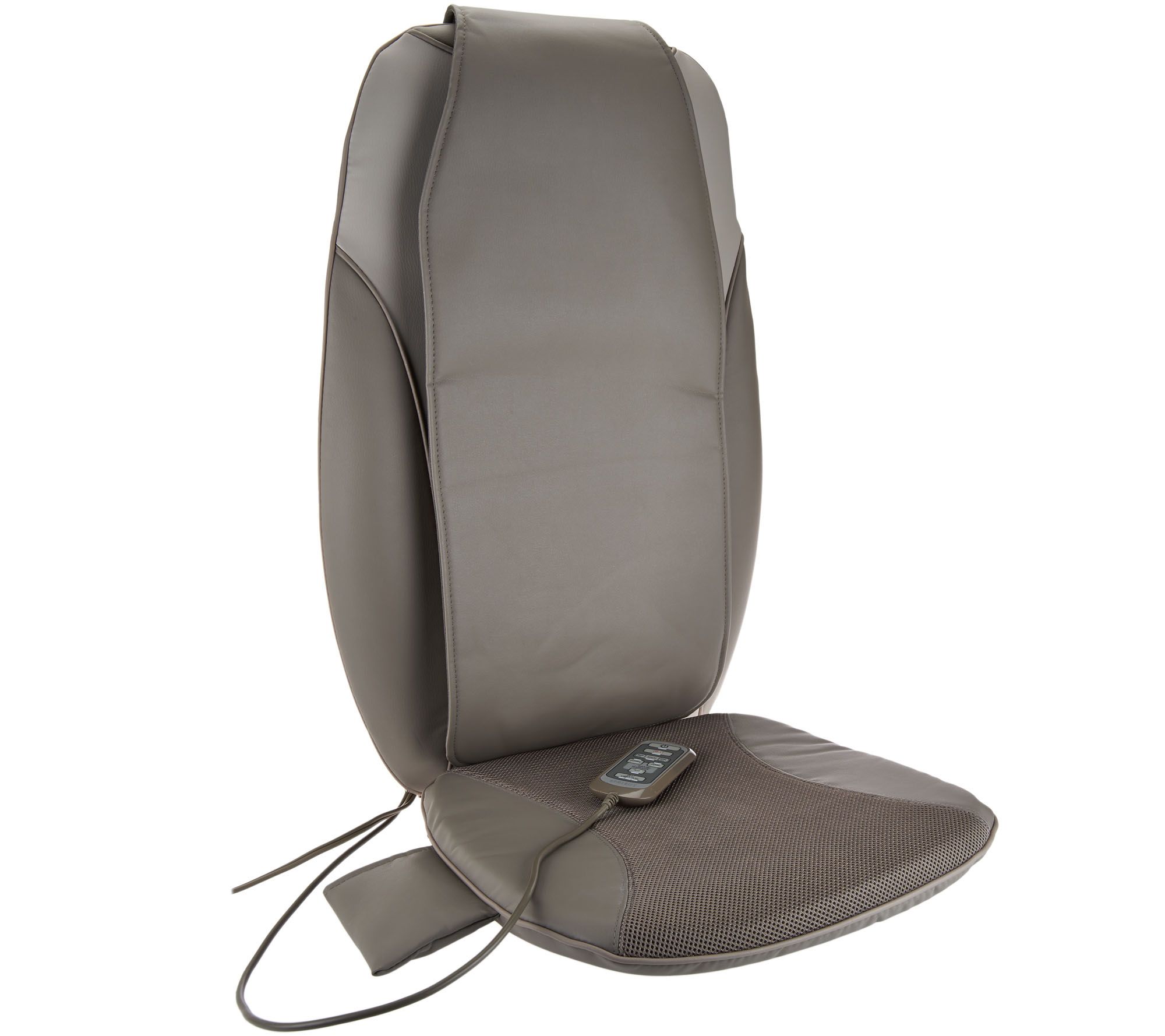Product Overview and Features: Homedics 3d Shiatsu Massage Chair Cushion

The Homedics 3D Shiatsu Massage Chair Cushion offers a convenient and affordable way to experience the benefits of shiatsu massage at home. This compact device provides targeted relief from muscle tension and promotes relaxation without the need for a full-sized massage chair. Its portability makes it ideal for use in various locations, including the living room, office, or even while traveling.
Key Features of the Homedics 3D Shiatsu Massage Chair Cushion
The Homedics 3D Shiatsu Massage Chair Cushion boasts several key features designed to enhance the user experience. These include its 3D massage nodes, which provide a deeper, more realistic shiatsu massage than traditional 2D models. It also offers multiple massage modes, adjustable intensity levels, and targeted heat therapy for added comfort and relaxation. The cushion’s ergonomic design ensures proper spinal alignment and comfort during use, and its easy-to-use controls allow for effortless customization of the massage experience. The inclusion of a convenient carrying handle enhances its portability.
Comparison to Similar Products, Homedics 3d shiatsu massage chair cushion
Compared to other shiatsu massage cushions on the market, the Homedics 3D Shiatsu Massage Chair Cushion distinguishes itself through its combination of features and price point. While some competitors may offer more advanced features, such as advanced body-scanning technology or a wider array of massage programs, the Homedics model provides a solid balance of functionality and affordability. Other cushions might lack the 3D massage nodes, resulting in a less intense and realistic massage experience. The Homedics cushion often stands out due to its positive user reviews and overall value proposition.
Massage Modes and Intensities
The Homedics 3D Shiatsu Massage Chair Cushion offers a variety of massage modes, allowing users to customize their experience. These typically include options such as upper back, lower back, full back, and spot massage. Each mode focuses on specific areas of the back, providing targeted relief. The intensity of the massage can be adjusted to the user’s preference, ranging from gentle kneading to a more vigorous, deep-tissue massage. This allows users to find the perfect level of intensity for their individual needs and comfort level. The heat function can be activated independently to further enhance relaxation and muscle relief.
Product Comparison Table
The following table compares the Homedics 3D Shiatsu Massage Chair Cushion to two competitor products, highlighting key differences in price, features, and user reviews. Note that pricing and user reviews can fluctuate and are based on average data collected at the time of writing.
| Product Name | Price (USD) | Key Features | Average User Rating (out of 5 stars) |
|---|---|---|---|
| Homedics 3D Shiatsu Massage Chair Cushion | $150 – $200 | 3D Shiatsu massage nodes, multiple massage modes, heat therapy, adjustable intensity, portable | 4.2 |
| Competitor A Shiatsu Massage Cushion | $120 – $180 | 2D Shiatsu massage nodes, fewer massage modes, heat therapy, adjustable intensity | 3.8 |
| Competitor B Shiatsu Massage Cushion | $250 – $350 | 3D Shiatsu massage nodes, multiple massage modes, heat therapy, adjustable intensity, additional features (e.g., Bluetooth connectivity) | 4.5 |
User Experience and Reviews
The Homedics 3D Shiatsu Massage Chair Cushion has garnered a range of user experiences, reflecting both its strengths and limitations. Online reviews offer a valuable insight into the product’s real-world performance and user satisfaction levels, providing a balanced perspective for potential buyers. Analyzing this feedback reveals common themes regarding usability, effectiveness, and areas for improvement.
User Testimonials and Usage Scenarios
Many users praise the Homedics cushion for its portability and ease of use. Testimonials frequently highlight its effectiveness in relieving back pain and muscle tension, citing its deep kneading shiatsu massage as particularly beneficial. Users report employing the cushion in various settings: at home for relaxation after a long day, in the office to combat prolonged sitting, and even in cars for added comfort during long drives. One user commented, “It’s a lifesaver after a long day at my desk job. The heat function is a welcome addition.” Another stated, “I use it in my car on long road trips. It makes a huge difference in comfort.” These diverse usage scenarios demonstrate the cushion’s adaptability and appeal to a wide range of users.
Common User Complaints and Issues
While overwhelmingly positive, some reviews highlight areas of concern. A recurring complaint centers on the intensity of the massage. Some users find the pressure too strong, even on the lowest setting, leading to discomfort. The size and shape of the cushion have also been noted as potential issues, with some users finding it too large or inflexible for certain chairs. Additionally, the longevity of the product has been questioned, with a few reports of mechanical issues arising after extended use. One user noted, “While I initially loved it, the massage nodes started to malfunction after about six months.”
Infographic Depicting User Experience
The infographic would be visually divided into two halves, representing positive and negative aspects of user experience. The positive side (left half) would be predominantly green, featuring icons such as a smiling face, a checkmark, and a relaxing figure sitting in a chair. Text would include phrases like “Pain Relief,” “Relaxation,” “Portability,” and “Easy to Use.” The negative side (right half) would be predominantly red, displaying icons such as a frowning face, an exclamation mark, and a broken device. Text would include “Intense Massage,” “Size/Shape Issues,” “Durability Concerns,” and “Price Point.” The overall design would be clean and uncluttered, utilizing clear, concise language and easily understandable visuals to convey the balance of positive and negative feedback effectively. The infographic would use a simple bar graph to compare the percentage of positive versus negative reviews, providing a visual representation of the overall user satisfaction.

